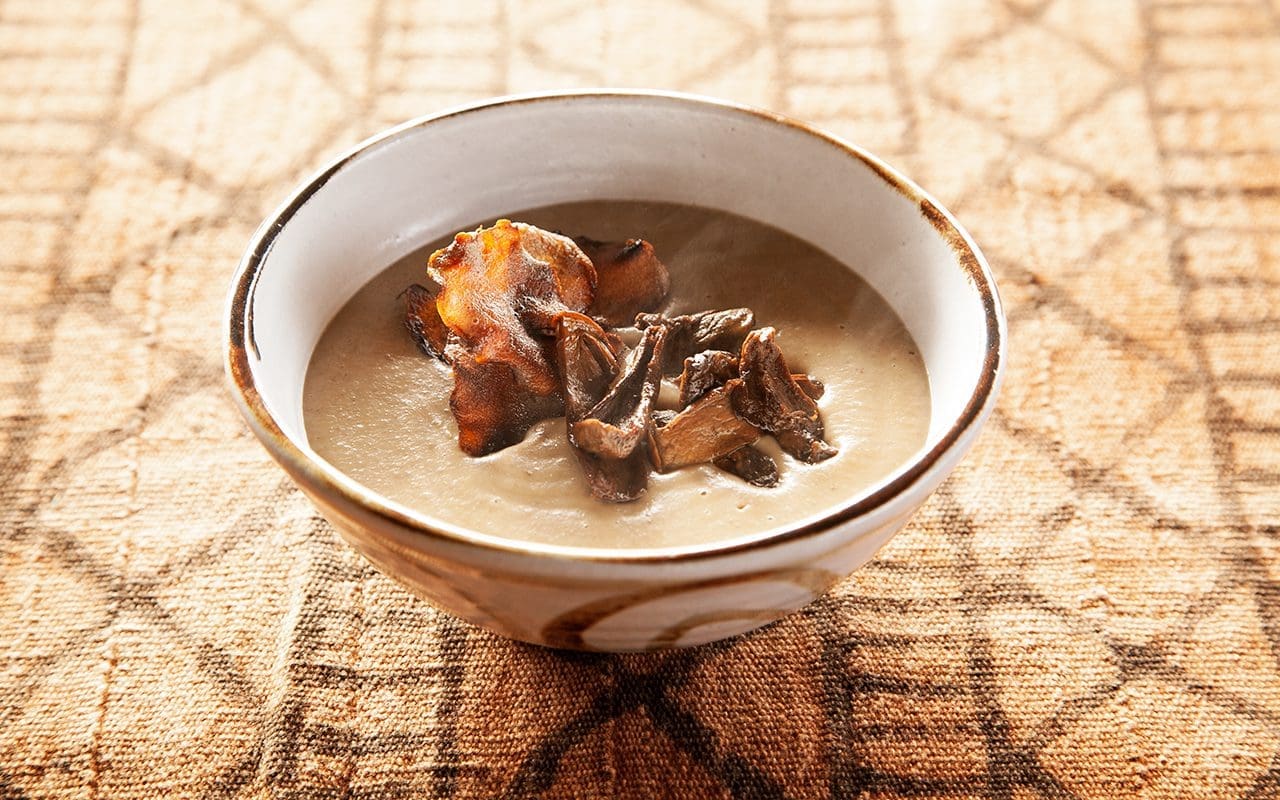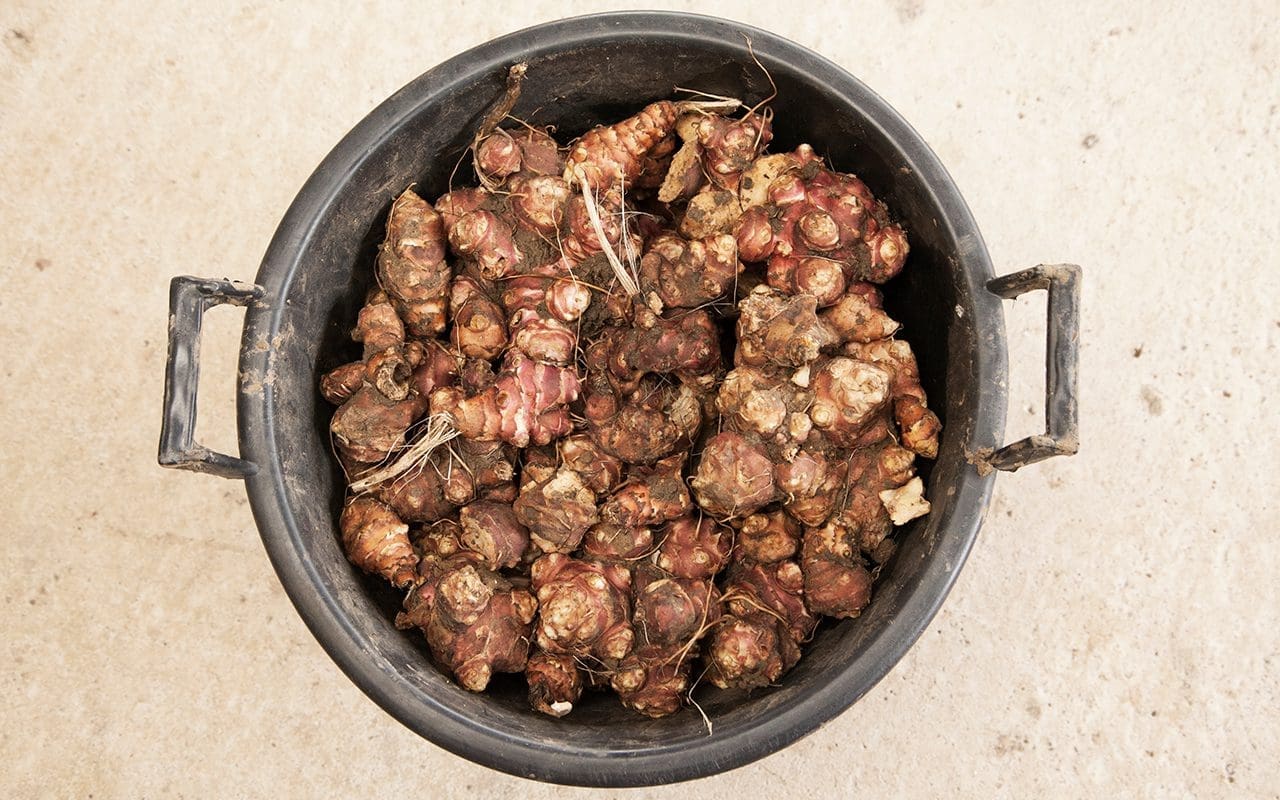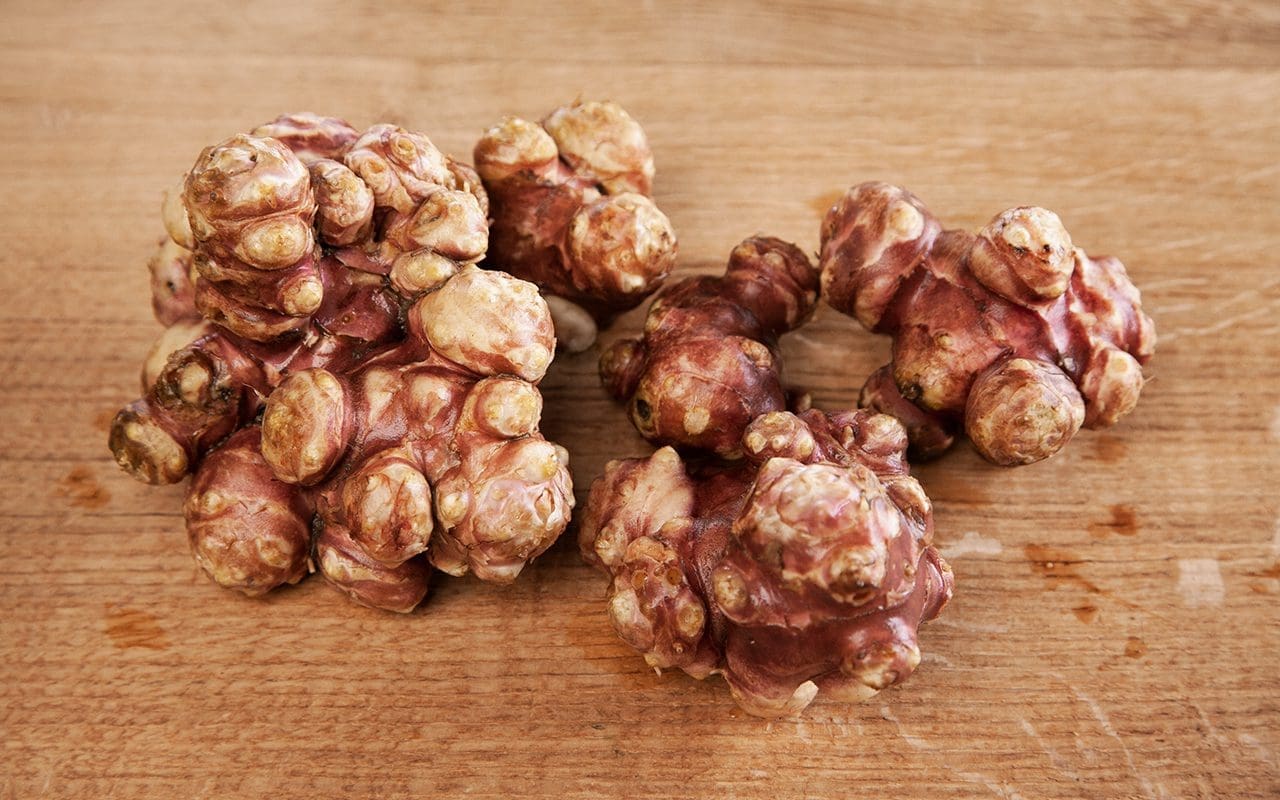
Last year was the first time that we have grown Jerusalem artichokes here. Not from a lack of desire, but a lack of space. That may sound crazy when our vegetable garden is larger than many peoples’ gardens, but Jerusalem artichokes are voracious plants and you must have enough space to give over to them if they are not to become problematic.
Growing to three metres tall and two metres across they should be placed on the north side of the garden so as not to shade out other crops. On the other hand they can be useful if you have vegetables that need shading or protecting from wind like some brassicas (broccoli, Brussels’ sprouts, kale), salad leaves and oriental greens. We fenced a new productive compound around the polytunneI last winter, so in the spring I ordered five tubers from Otter Farm. Planted 60cm apart and 15cm deep in April by August they had overreached their 4 metre by 1 metre bed and, on our rich soil, have produced a crop of almost 20 kilos in one season.
Not from Jerusalem at all, but a native of North America, Helianthus tuberosus is, as its Latin name indicates, a type of sunflower, a perennial variety which means it should be planted where you intend to keep it, as it will return year after year. Prone to spreading they should be planted where you can get at them easily to curb their invasive tendencies. For the same reason, when harvesting it is important to try to dig up all of the tubers, as a single one left in the ground will cause your colony to proliferate the following year. I have kept five tubers back this year to replant in the same position. Like potatoes Jerusalem artichokes can be a good first crop to plant in previously uncultivated or heavy ground as the growth of the tubers and their subsequent harvesting break up the soil. However, you must remove all trace of them if you plan to grow other crops in their place afterwards.
Ready to harvest from late October onwards Jerusalem artichokes do not store well once lifted and so are best left in the ground and harvested as required. Incredibly hardy they will tolerate winter temperatures down to -30°C. If you have to dig them all up they are best stored in a cool, dark place such as an outhouse, cellar or shed, although they will keep, well-washed and well-dried, in the salad drawer of the fridge for a week or so.
The fleshy, edible tubers are quite unlike any other vegetable in texture or taste. Although starchy like potatoes, they have a sweet, nutty flavour when cooked which is just about comparable to artichoke hearts, but also distinctly its own thing. Unlike potatoes they can be eaten raw, when their texture is reminiscent of water chestnuts. Thinly sliced with a sharp citrus dressing they make an unusual, crisp winter salad.
Their reputation for causing flatulence precedes them and is what often prevents people from growing or eating them. Caused by the inulin they contain, a starch which is difficult to digest, it is not a problem for everyone and it would seem, from personal experience, that the more often you eat them the less of a problem this is.
Their somewhat delicate, earthy flavour is also distinctive and although typically combined with woodsy flavours like bay, sage, thyme and nutmeg, it can hold its own with much stronger flavours and works unexpectedly well with punchy Mediterranean ingredients; tomatoes, red onions, black olives, capers and anchovies.
This recipe is for a rich, velvety and warming soup for a frosty day. Add more liquid if you prefer a thinner soup. Cooked with half the amount of water the resulting purée is a good accompaniment to game birds, chicken and firm white fish. Substitute the artichokes with celeriac or good floury potatoes if the prospect of a windy evening puts you off.

1kg Jerusalem artichokes
40g dried porcini mushrooms
1 small onion
A spring of thyme, to yield about 1 tsp of leaves
50g butter
4 tbsp rapeseed oil
150ml full cream milk
About 1 litre of water
Serves 4

Set the oven to 200°C.
Soak the dried mushrooms in 200ml hot water.
Heat 25g of butter in a large pan over a medium heat. Finely chop the onion and cook for a few minutes until soft and translucent, stirring from time to time.
Remove the porcini from their water. Squeeze the liquid out of them back into the bowl and retain. Coarsely chop two thirds of them and add to the onions with the thyme. Cook together for a few minutes more, stirring occasionally.
Scrub the artichokes extremely well and remove the fibrous hair roots. Trim off any black patches. Reserve one tuber of approximately 100g and cut the remainder into walnut-sized pieces. Put into a roasting pan in a single layer. Drizzle with olive oil and roast in the oven, turning occasionally, for about 30 minutes until softened and caramelised. Add them to the pot with the onions and mushrooms.
Make the mushroom soaking water up to 1 litre with fresh water and add to the pot. Bring to a gentle simmer and cook with the lid on for about 20 minutes until the artichokes are soft.
Blend the mixture until smooth. Add the milk and season with salt and pepper. Return to a very low heat to keep hot.
Melt the remaining butter in a small pan over a medium heat. Coarsely chop the remaining porcini and stew in the butter for a few minutes until soft and glossy. Remove from the pan and reserve.
Add the rapeseed oil to the a pan and raise the heat. Using a very sharp knife or mandolin slice the reserved artichoke very thinly. When the oil is smoking fry the artichoke slices in batches until brown. Drain on kitchen paper where they will crisp up.
Ladle the soup into warm bowls and place a few artichoke crisps and stewed mushrooms on top. Serve piping hot.
Recipe & photographs: Huw Morgan
Published 29 January 2022
 Previous
Previous
 Next
Next
